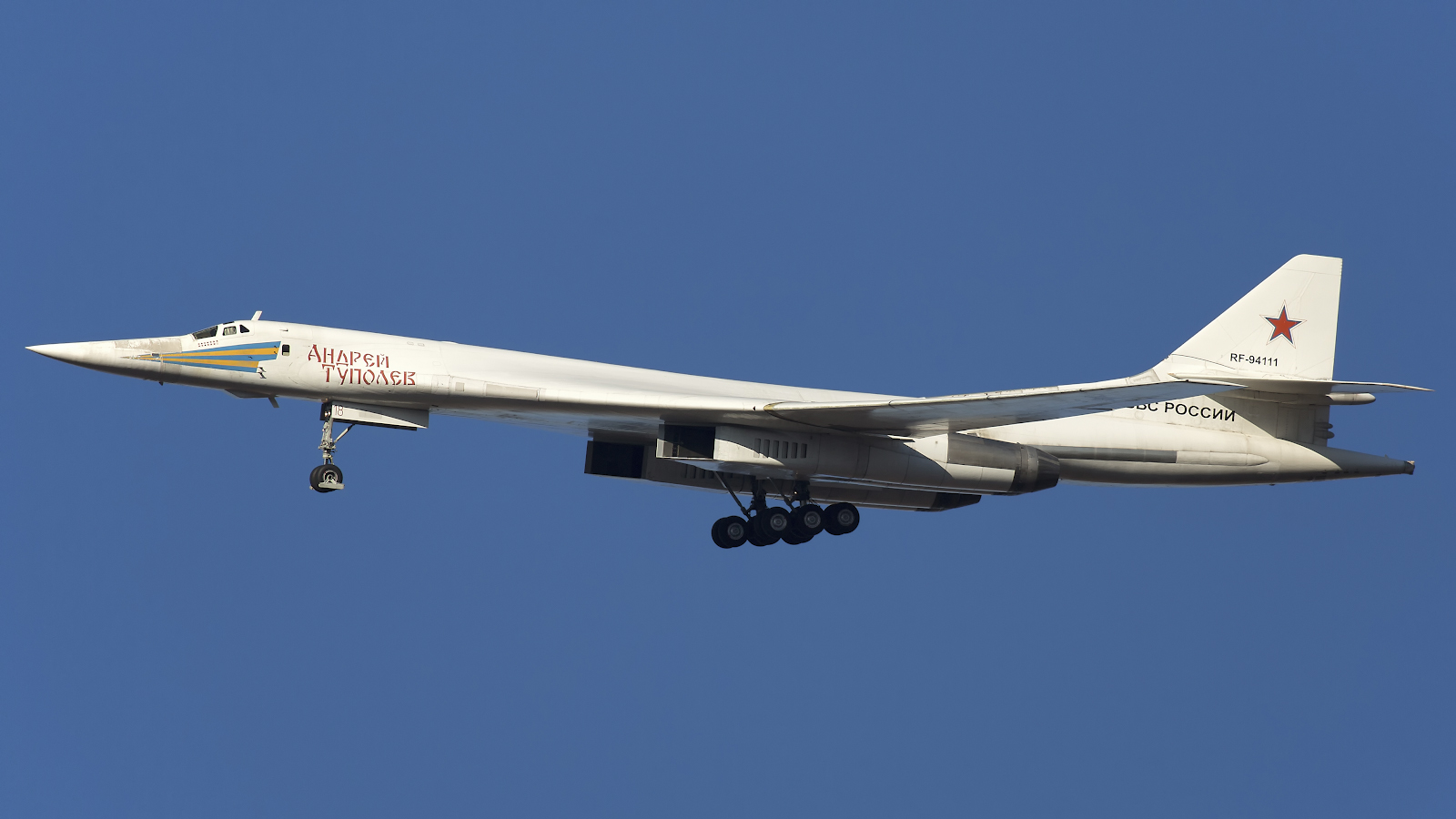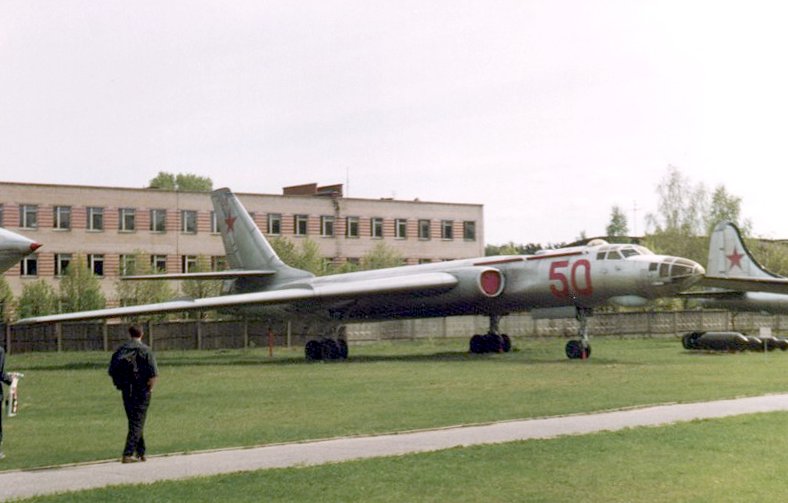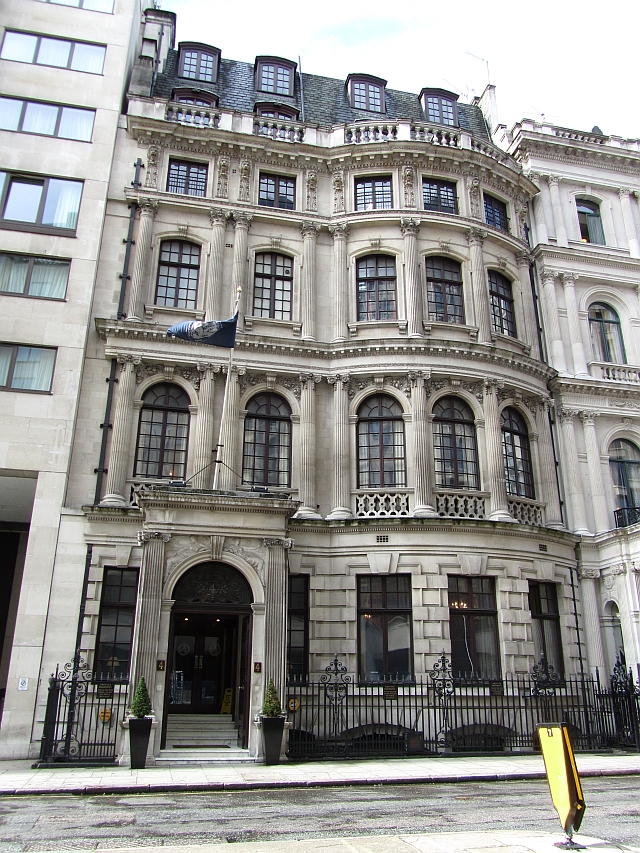|
Andrey Tupolev
Andrei Nikolayevich Tupolev (; – 23 December 1972) was a Russian and later Soviet aeronautical engineer known for his pioneering aircraft designs as the director of the Tupolev Design Bureau. Tupolev was an early pioneer of aeronautics in Russia and served as a protégé of Nikolay Zhukovsky. Tupolev designed or oversaw the design of more than 100 types of civilian and military aircraft in the Soviet Union over 50 years, some of which set 78 world records. Tupolev produced many notable designs such as the Tu-2, Tu-16, Tu-95, and Tu-104, and the reverse engineered Tu-4. Tupolev was highly honoured in the Soviet Union and awarded various titles and honours including the Hero of Socialist Labor three times, Order of Lenin eight times, Order of the Red Banner of Labour two times, made an academician of the Russian Academy of Sciences in 1953, and a Colonel-General of the Soviet Air Force in 1968. Tupolev was also honoured outside the Soviet Union as an honorary member of t ... [...More Info...] [...Related Items...] OR: [Wikipedia] [Google] [Baidu] |
Kimrsky District
Kimrsky District () is an administrative and municipalLaw #4-ZO district (raion), one of the administrative divisions of Tver Oblast, thirty-six in Tver Oblast, Russia. It is located in the southeast of the oblast and borders with Kalyazinsky District in the northeast, Taldomsky District of Moscow Oblast and the town of Dubna, also of Moscow Oblast, in the south, Konakovsky District in the southwest, Kalininsky District, Tver Oblast, Kalininsky District in the west, and with Rameshkovsky District in the northwest. The area of the district is . Its administrative center is the types of inhabited localities in Russia, town of Kimry (which is not administratively a part of the district).Law #34-ZO Population: 13,190 (Russian Census (2010), 2010 Census); Geography The whole area of the district belongs to the drainage basin of the Volga River, Volga. The Volga, built as the Uglich Reservoir, crosses the district from the southwest to the northeast, separating it into two unequal parts ... [...More Info...] [...Related Items...] OR: [Wikipedia] [Google] [Baidu] |
Tupolev Tu-16
The Tupolev Tu-16 (USAF/DOD reporting name Type 39; NATO reporting name: Badger) is a twin-engined jet strategic heavy bomber used by the Soviet Union. It has been flown for almost 70 years. While many aircraft in Soviet service were retired after the Cold War ended, the Chinese license-built version Xian H-6 remains in service with the People's Liberation Army Air Force, with the most modern variant, the H-6K, still being actively produced . Development In the late 1940s, the Soviet Union was strongly committed to matching the United States in strategic bombing capability. The Soviets' only long-range bomber at the time was Tupolev's Tu-4 "Bull", a reverse-engineered copy of the American B-29 Superfortress. The development of the notably powerful Mikulin AM-3 turbojet led to the possibility of a large, jet-powered bomber. The Tupolev design bureau began work on the Tu-88 ("Aircraft N") prototypes in 1950. The Tu-88 first flew on 27 April 1952. After winning a competition ... [...More Info...] [...Related Items...] OR: [Wikipedia] [Google] [Baidu] |
Russian Empire
The Russian Empire was an empire that spanned most of northern Eurasia from its establishment in November 1721 until the proclamation of the Russian Republic in September 1917. At its height in the late 19th century, it covered about , roughly one-sixth of the world's landmass, making it the list of largest empires, third-largest empire in history, behind only the British Empire, British and Mongol Empire, Mongol empires. It also Russian colonization of North America, colonized Alaska between 1799 and 1867. The empire's 1897 census, the only one it conducted, found a population of 125.6 million with considerable ethnic, linguistic, religious, and socioeconomic diversity. From the 10th to 17th centuries, the Russians had been ruled by a noble class known as the boyars, above whom was the tsar, an absolute monarch. The groundwork of the Russian Empire was laid by Ivan III (), who greatly expanded his domain, established a centralized Russian national state, and secured inde ... [...More Info...] [...Related Items...] OR: [Wikipedia] [Google] [Baidu] |
Tver Governorate
Tver Governorate () was an administrative-territorial unit (''guberniya'') of the Russian Empire and the Russian Socialist Federative Soviet Republic, Russian SFSR, which existed from 1796 until 1929. Its seat was in Tver. The governorate was located in the north of the European part of the Russian Empire and bordered Novgorod Governorate in the north, Yaroslavl Governorate in the east, Vladimir Governorate in the southeast, Moscow Governorate in the south, Smolensk Governorate in the southwest, and Pskov Governorate in the west. The area of the governorate is currently split between the Tver Oblast, Tver and Moscow Oblast, Moscow oblasts. Minor parts of Tver Governorate also currently belong to the Yaroslavl Oblast, Yaroslavl and Novgorod Oblast, Novgorod oblasts. History In the 18th century, the areas which were later occupied by Tver Governorate were split between Moscow Governorate, Moscow and Novgorod Governorates. On 25 November 1775 Tver Viceroyalty was established ... [...More Info...] [...Related Items...] OR: [Wikipedia] [Google] [Baidu] |
Kimry
Kimry (), formerly Kimra (), is a town in the south of Tver Oblast, Russia, located on the Volga River at its confluence with the Kimrka River, to the east of Tver. Population: History The town was known as Kimra until the beginning of the 20th century; the name is probably of Finnic or Baltic origin. It was first mentioned in 1546 as a selo belonging to Ivan the Terrible Ivan IV Vasilyevich (; – ), commonly known as Ivan the Terrible,; ; monastic name: Jonah. was Grand Prince of Moscow, Grand Prince of Moscow and all Russia from 1533 to 1547, and the first Tsar of all Russia, Tsar and Grand Prince of all R .... It belonged to Russian Tsars until 1677 and then was given to the Saltykov family. In 1847, the inhabitants bought themselves out, and Kimra quickly developed into a busy shoemaking and trading village on the left bank of the Volga (a boot appears on the town's coat of arms). Théophile Gautier wrote in his ''Voyage en Russie'' (1867): "Kimra est célèbre p ... [...More Info...] [...Related Items...] OR: [Wikipedia] [Google] [Baidu] |
Museum Of Moscow Aviation Institute 2016-02-02 009 (cropped)
A museum is an institution dedicated to displaying or preserving culturally or scientifically significant objects. Many museums have exhibitions of these objects on public display, and some have private collections that are used by researchers and specialists. Museums host a much wider range of objects than a library, and they usually focus on a specific theme, such as the arts, science, natural history or local history. Public museums that host exhibitions and interactive demonstrations are often tourist attractions, and many draw large numbers of visitors from outside of their host country, with the most visited museums in the world attracting millions of visitors annually. Since the establishment of the earliest known museum in ancient times, museums have been associated with academia and the preservation of rare items. Museums originated as private collections of interesting items, and not until much later did the emphasis on educating the public take root. Etymology The ... [...More Info...] [...Related Items...] OR: [Wikipedia] [Google] [Baidu] |
Vnukovo International Airport
Vnukovo, formally Vnukovo Andrei Tupolev International Airport (named after Andrei Tupolev) ( rus, links=no, Внуково, p=ˈvnukəvə) , is a dual-runway international airport located in Vnukovo District, southwest of the centre of Moscow, Russia. It is one of the four major airports that serve Moscow, along with Moscow Domodedovo Airport, Domodedovo, Sheremetyevo International Airport, Sheremetyevo, and Zhukovsky International Airport, Zhukovsky. In 2019, the airport handled 24.01 million passengers, representing an increase of 12% compared to the previous year. Vnukovo was the List of the busiest airports in Europe, eleventh-busiest airport in Europe in 2021 but had a strong decline in traffic and dropped to 30th place in 2022 as a consequence of sanctions following the Russian invasion of Ukraine. As of 2024 it is the List of the busiest airports in Russia, 3-rd busiest airport in Russia and List of the busiest airports in the former Soviet Union, Post-Soviet states as we ... [...More Info...] [...Related Items...] OR: [Wikipedia] [Google] [Baidu] |
American Institute Of Aeronautics And Astronautics
The American Institute of Aeronautics and Astronautics (AIAA) is a professional society for the field of aerospace engineering Aerospace engineering is the primary field of engineering concerned with the development of aircraft and spacecraft. It has two major and overlapping branches: aeronautical engineering and astronautical engineering. Avionics engineering is s .... The AIAA is the U.S. representative on the International Astronautical Federation and the International Council of the Aeronautical Sciences. In 2015, it had more than 30,000 members among aerospace professionals worldwide (a majority are American or live in the United States). History The AIAA was founded in 1963 from the merger of two earlier societies: the American Rocket Society (ARS), founded in 1930 as the American Interplanetary Society (AIS), and the Institute of the Aerospace Sciences (IAS), founded in 1932 as the Institute of the Aeronautical Sciences. Paul Johnston was the first executive ... [...More Info...] [...Related Items...] OR: [Wikipedia] [Google] [Baidu] |
Royal Aeronautical Society
The Royal Aeronautical Society, also known as the RAeS, is a British multi-disciplinary professional institution dedicated to the global aerospace community. Founded in 1866, it is the oldest Aeronautics, aeronautical society in the world. Members, Fellows, and Companions of the society can use the post-nominal letters MRAeS, FRAeS, or CRAeS, respectively. Function The objectives of The Royal Aeronautical Society include: to support and maintain high professional standards in aerospace disciplines; to provide a unique source of specialist information and a local forum for the exchange of ideas; and to exert influence in the interests of aerospace in the public and industrial arenas, including universities. The Royal Aeronautical Society is a worldwide society with an international network of 67 branches. Many practitioners of aerospace disciplines use the Society's designatory Post-nominal letters, post-nominals such aFRAeS CRAeS, MRAeS, AMRAeS, and ARAeS (incorporating the fo ... [...More Info...] [...Related Items...] OR: [Wikipedia] [Google] [Baidu] |
Soviet Air Force
The Soviet Air Forces (, VVS SSSR; literally "Military Air Forces of the Union of Soviet Socialist Republics"; initialism VVS, sometimes referred to as the "Red Air Force") were one of the air forces of the Soviet Union. The other was the Soviet Air Defence Forces. The Air Forces were formed from components of the Imperial Russian Air Service in 1917, and faced their greatest test during World War II. The groups were also involved in the Korean War, and dissolved along with the Soviet Union itself in 1991–92. Former Soviet Air Forces' assets were subsequently divided into several air forces of former Republics of the Soviet Union, Soviet republics, including the new Russian Air Force. The "Air March, March of the Pilots" was its marching song. Origins The first military aviation branch of Russia or any of the Soviet Union's constituent states was the short-lived Imperial Russian Air Service, founded in 1912 and disbanded in 1917 with the onset of the Bolshevik Revolution and ... [...More Info...] [...Related Items...] OR: [Wikipedia] [Google] [Baidu] |
Colonel-General
Colonel general is a military rank used in some armies. It is particularly associated with Germany, where historically general officer ranks were one grade lower than in the Commonwealth and the United States, and was a rank above full , but below . The rank of colonel general also exists in the armed forces organized along the lines of the Soviet model, where it is comparable to that of a lieutenant general. Austria-Hungary In the Austro-Hungarian Army, the second-highest rank was colonel general (, ). The rank was introduced in 1915, following the German model. The rank was not used after World War I in the Austrian Army of the Republic. Kuk ColGen 1918.svg, Insignia of an Austro-Hungarian Army colonel general Hungary The rank of () is still used in Hungary. The rank replaced the ranks of (general of infantry), (general of cavalry), and (general of artillery) in the early 1940s. Since 1991, has been the highest rank in the Hungarian Defence Forces, and is official ... [...More Info...] [...Related Items...] OR: [Wikipedia] [Google] [Baidu] |







